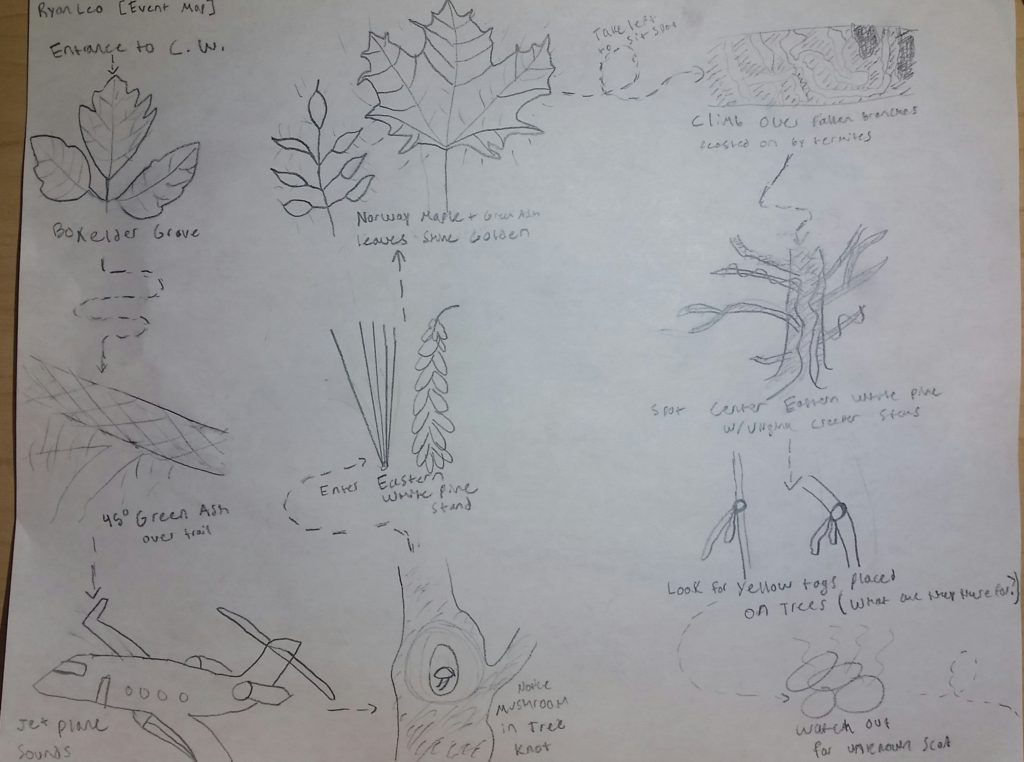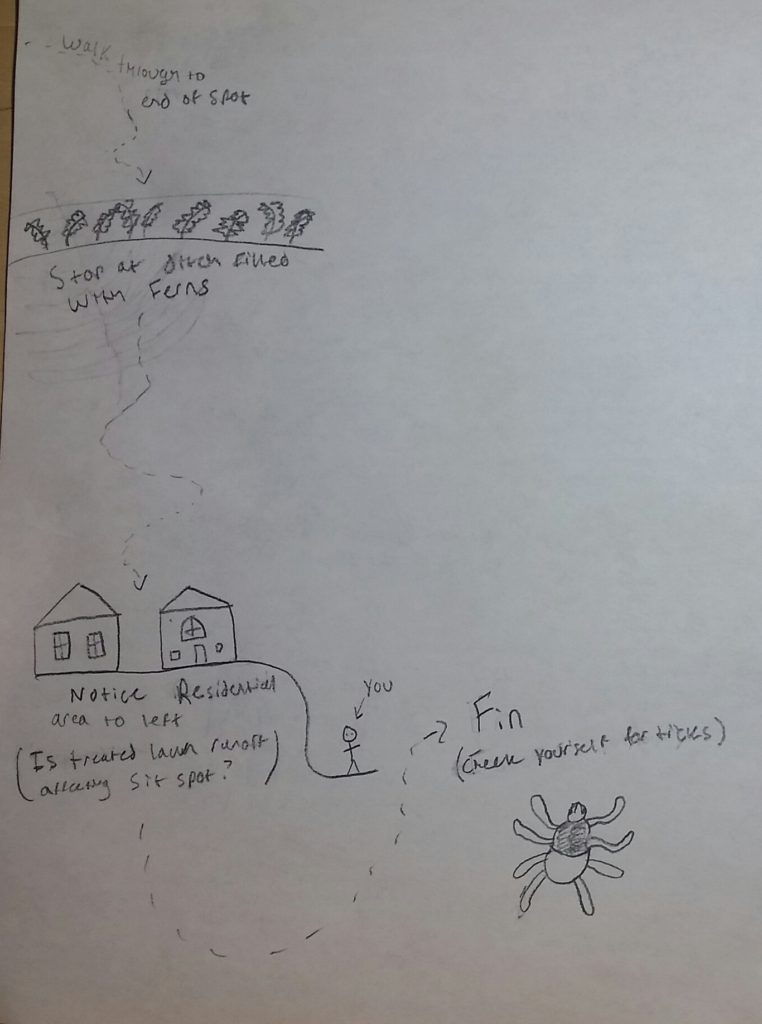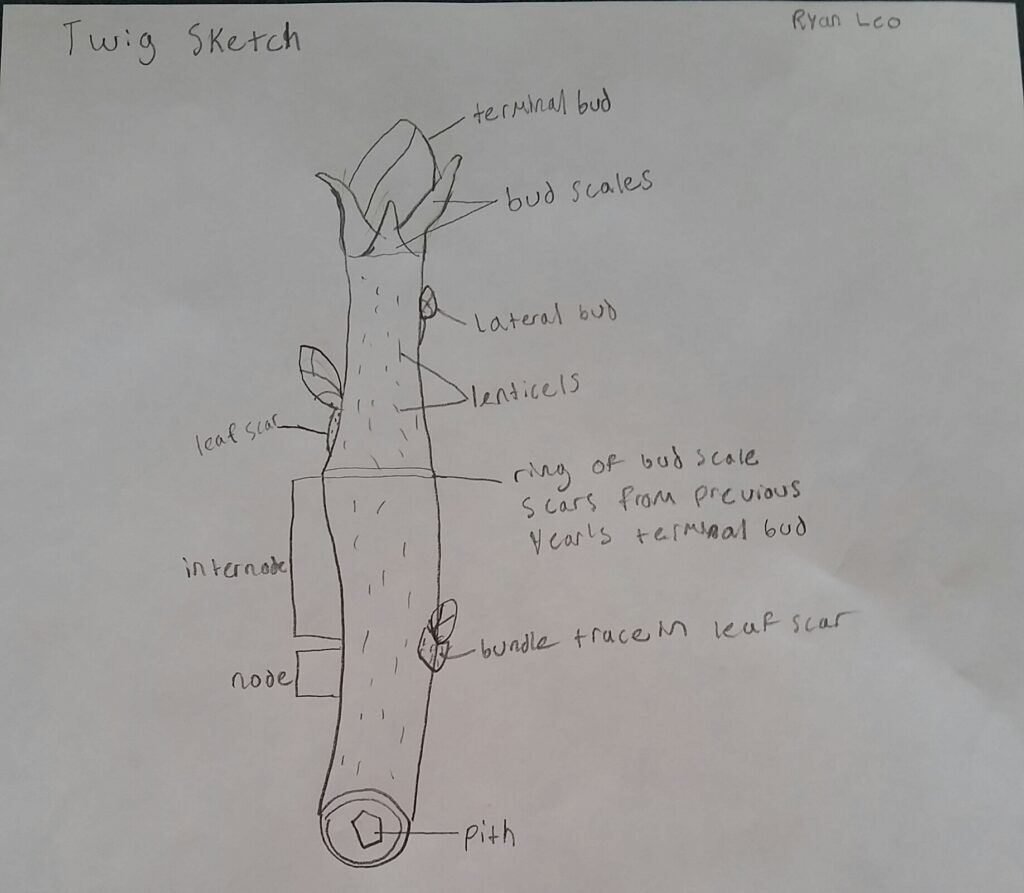
Deciduous Trees: Twig Identification

Willow- hoodlike scale, alternate branching

Box Elder- purple downy buds
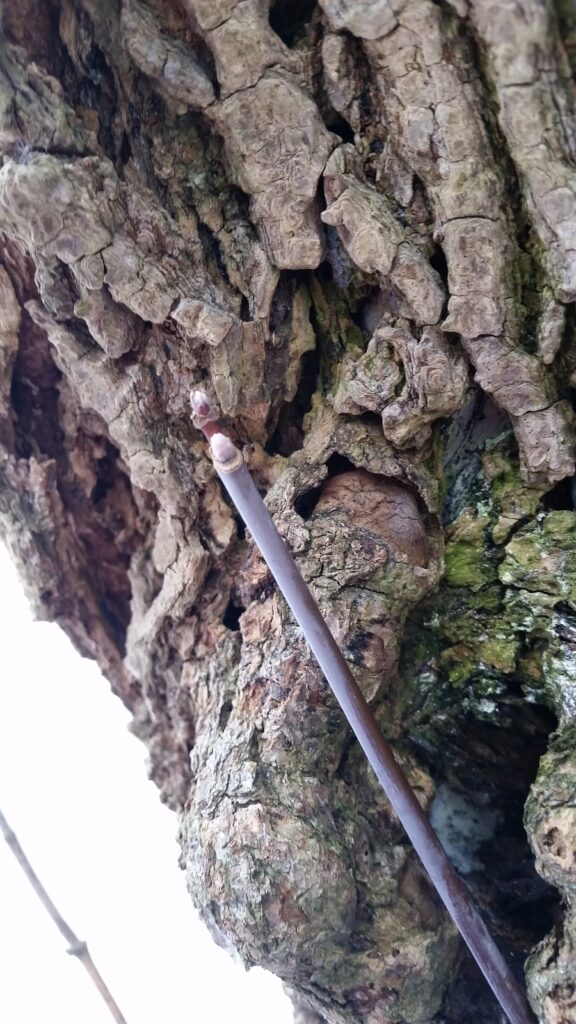
Green Ash- terminal bud surrounded by two lateral buds
Update: February
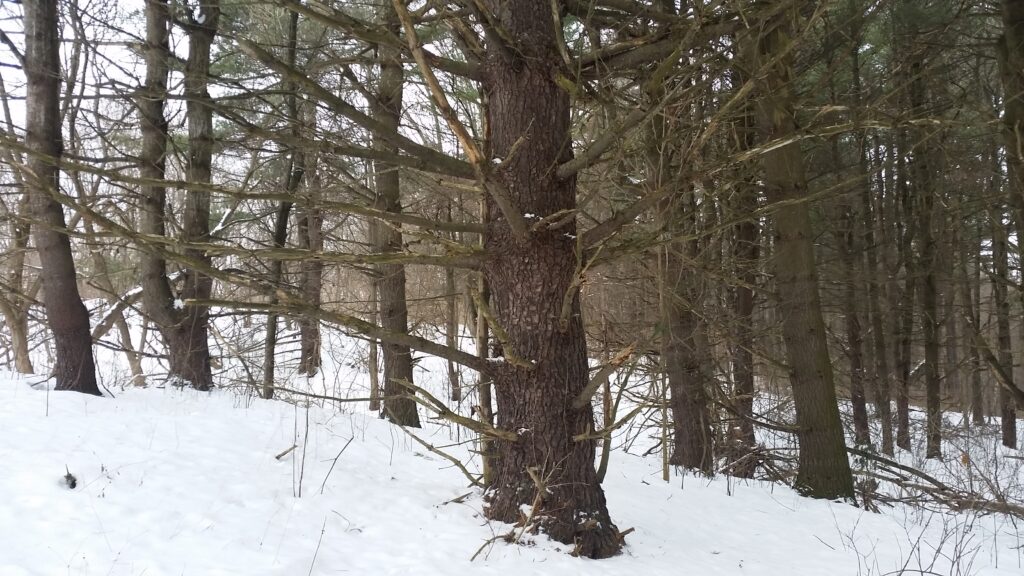
Crisp air stings my face every time the wind picks up the snow drifts. The snow from the previous storm crunches each time my foot falls. After a month, I have returned to my phenology spot in Centennial woods. The surroundings are much different from the last time I visited. Snow covers the ground creating a subnivean underworld that disappears with each step of my foot. The small deciduous trees have buds sprouting from their branches.

As I trek deeper into my sit spot a gust of wind passes over the area. The Eastern White Pines creek in the wind providing a spooky ambience to the area. All around me I see tracks of all shapes and sizes. As I trudge trough the snow to leave, I think back to the first time I visited and the huge changes since the fall.
Human Land-Use History of Phenology Spot
The sit spot were I frequent, in the study of phenology, sits in a forest called Centennial woods. The namesake explains the century the woods has stood, but it begs the question of before the woods was established. Looking back at the picture from 1937, in the previous post, we can see that the part of the land including my sit spot was cleared of forest. Cross-referencing that with a field guide about the woods, I deducted that it was a farmscape of some sort. The document describes the areas around my sit spot; “Because this field is no longer kept open by humans for pasture or other farm use, it is undergoing succession, or orderly change in the types of plants and animal communities that live here.” (Environmental Program 1). This quote is in a section that describes the conditions of where my sit spot lies, providing evidence, along with the map, that my phenology spot is reintegrated forestland.
Citations:
Environmental Program. The Changing Landscapes of Centennial Woods Natural Area. Burlington, VT: University of Vermont. Retrieved from: http://www.uvm.edu/~uvmsc/Centennial%20Woods/Changing_Landscapes_Centennial_Woods002.pdf
1937 Map of Centennial Woods(Land-Use History)
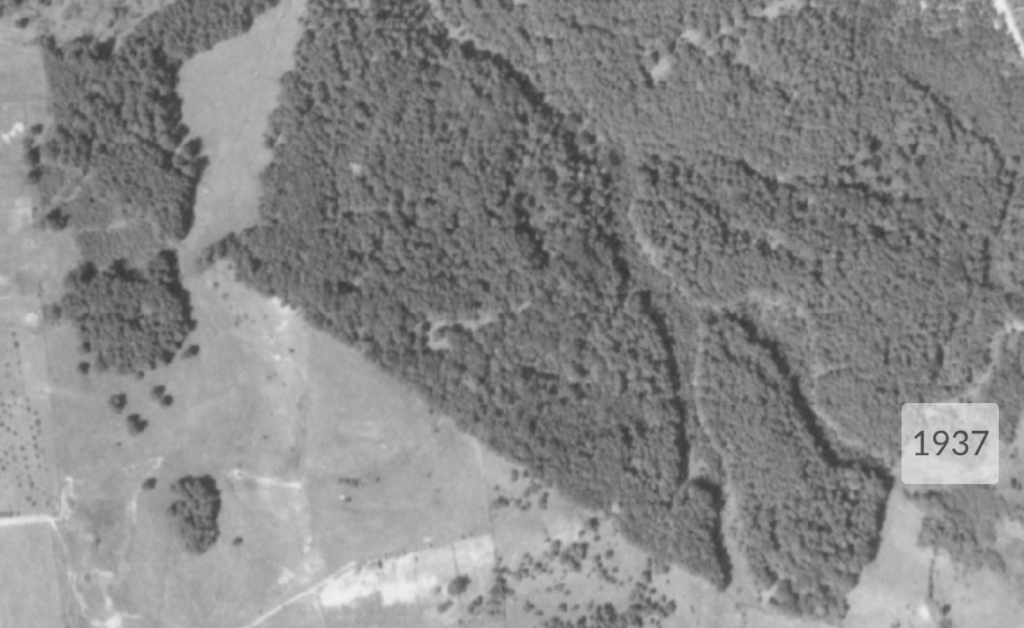 Citation:
Citation:
Mapwarper, Mapbox[cartographers]. (2017). Greater Burlington Area (1937-2017)[Map]. Retrieved from https://wboykinm.github.io/btv-1937/?fbclid=IwAR1uTjHLRXbOb7f-wUymEF
Comparison of Fall Temporary Spot with UVM Spot
While the UVM sit spot does not have the childhood memories of the temporary one at home, it is entwined with the new friends and experiences of college. The historical and present of the land uses do differ drastically. The phenology spot at UVM is in Centennial Woods has a past history as farmland and a present history as a natural protected area. My home phenology spot has always been a forest until the area around was developed in the 1990’s.
In ecological comparisons, the two spots have a similar canopy with a multitude of Eastern White Pines mixed in with other deciduous trees. Yet, there are still differences as the spot in Centennial is an Eastern White Pine stand and the spot at home is a mixed forest. Also, the understory at the UVM spot is mostly clear but has some deciduous trees, whereas the home spot has a thick understory of brambles, White Birches, and Eastern White Pines. As I observed further, I notice that the wildlife abundance of squirrels, chipmunks, and birds at the home sit spot was increased compared with the UVM sit spot. The last different defining piece between the two sites is the substrate of soil. At Centennial Woods the glacial Lake Vermont has provided a sandy soil substrate, while the home spot has eroded from granite providing a relatively loamy soil with some sand from the quartz.
Description of Fall Temporary Spot
Walking outside the crisp air of November enveloped me. I traversed across the yard and up a slight hill, to the woods were my youth was spent and my love for he environment. Standing in a little clearing were a childhood fort once stood, I looked up and marveled at the incredible height of the Eastern White Pines mixed with White Oaks, Red Maples, and an understory of Eastern White Pine and White Birch. The place has always stirred my wonder since I was but a young boy. The pines had a light dusting of snow from the weekend and I could hear nothing but the wind through the trees. Next to the clearing was a little mound of soil with plants growing all over it and a huge quartz rock. I remember back to the day were I tried to dig out what appeared to be a small quartz rock. That adventure quickly turned into a mouth long dig of pulling granite rock after granite rock out of the ground.
This journey allowed me to determine the soil composition of the ground as sandy loam with high amounts of granite and quartz, and a granite bedrock. The high amounts of Eastern White Pines in the canopy has increased the tannic acid in the soil lowering the pH. But, the area does have a high biodiversity in tree species including Red Maples and White Oaks proving that the soil conditions actually have a wide variety of conditions. Mixed throughout the forest are some White Birches, which describes some full sun spots possibly disturbances in the forest. Even with the snow cover there’s obvious signs that squirrels and possible other wildlife have been collecting food for their caches. With one final glance I see the succession of nature, and the marks once left on the land from my occupation are now gone.
Photos of Fall Temporary Spot
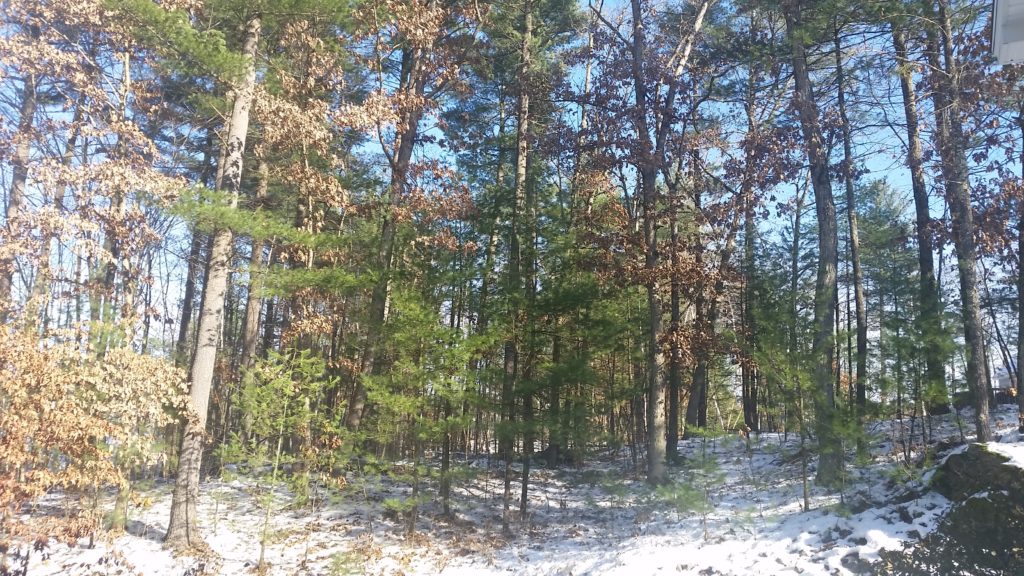
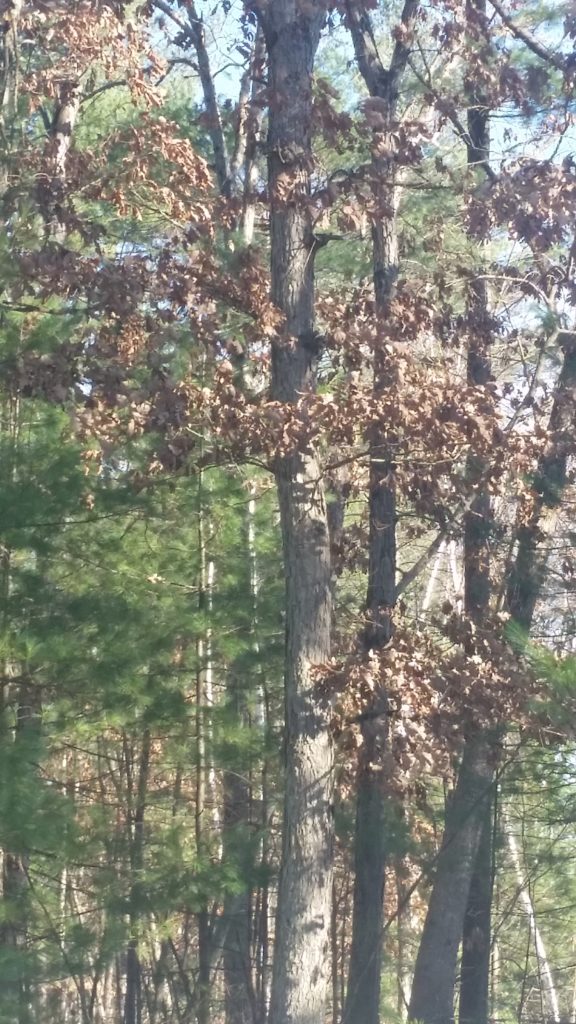
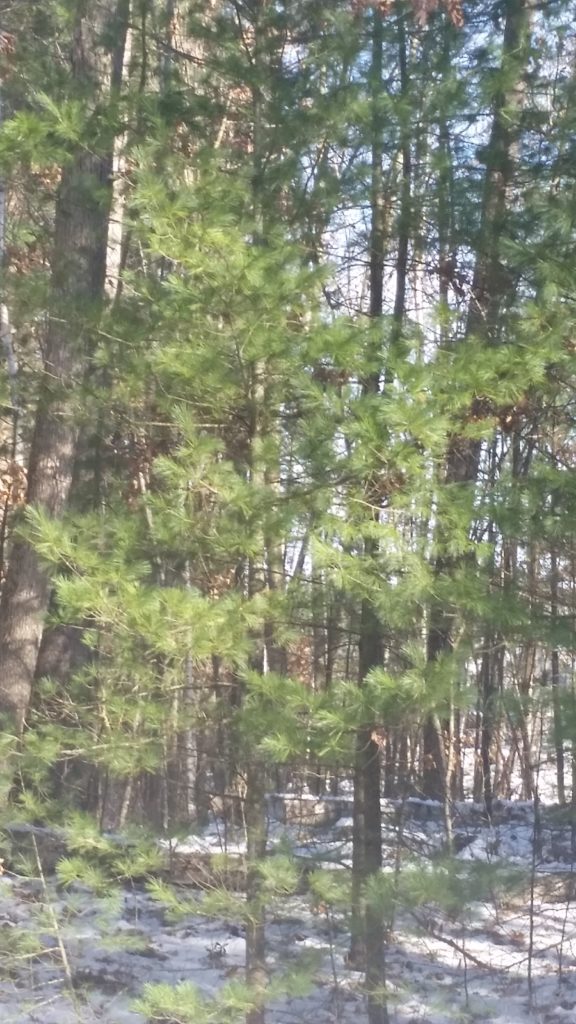

Map of Fall Temporary Spot
https://www.google.com/maps/d/edit?mid=1OKZ9XQCA2ahwJ7XBFBjUwtuFl3XPh-U1&ll=42.83045661396258%2C-71.41116398752013&z=20
Event Map
